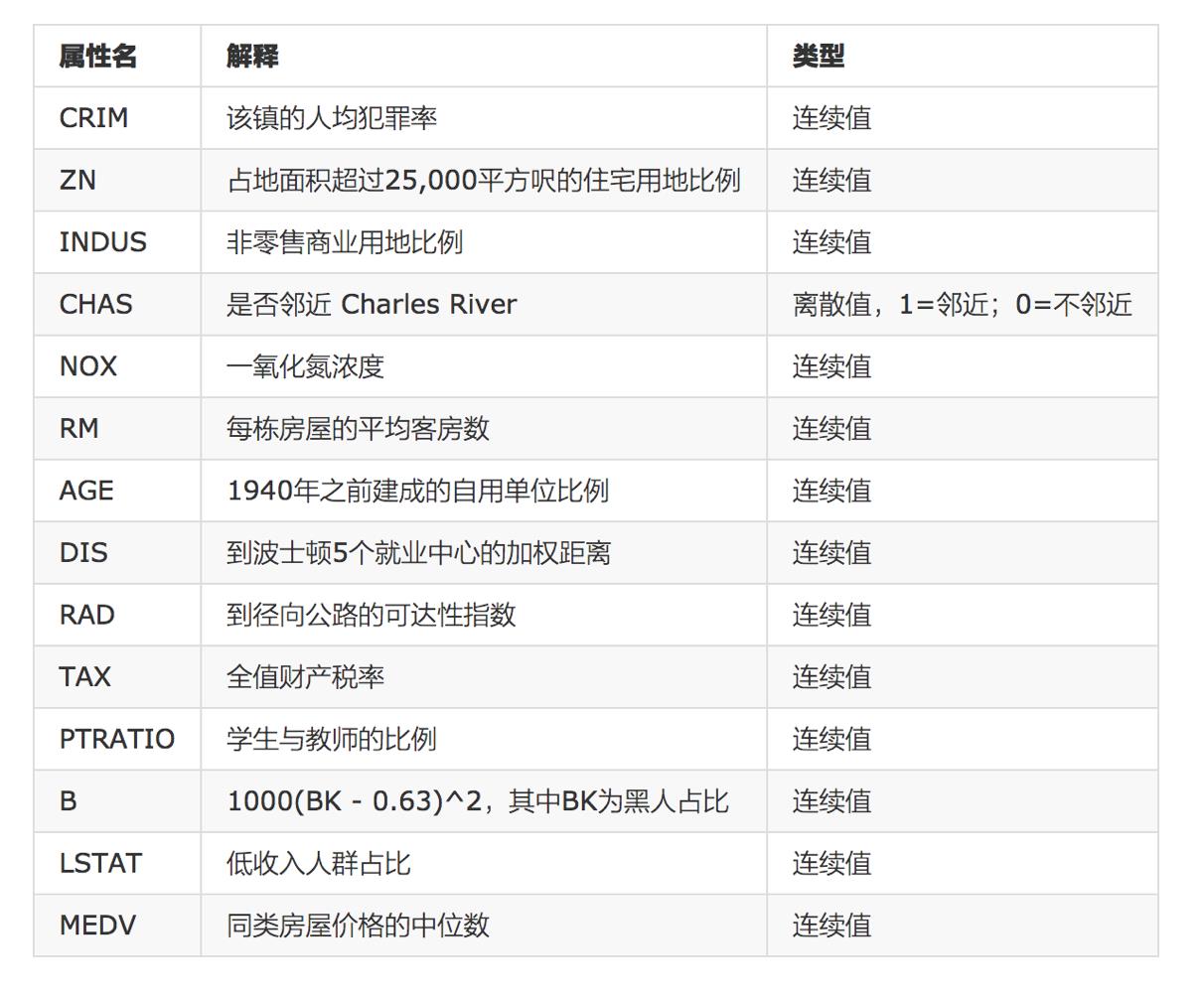线性回归案例:波士顿房价预测
Posted ZSYL
tags:
篇首语:本文由小常识网(cha138.com)小编为大家整理,主要介绍了线性回归案例:波士顿房价预测相关的知识,希望对你有一定的参考价值。
1. 背景介绍
- 数据介绍


给定的这些特征,是专家们得出的影响房价的结果属性。我们此阶段不需要自己去探究特征是否有用,只需要使用这些特征。到后面量化很多特征需要我们自己去寻找。
2. 案例分析
回归当中的数据大小不一致,是否会导致结果影响较大。所以需要做标准化处理。
- 数据分割与标准化处理
- 回归预测
- 线性回归的算法效果评估
3. 回归性能评估
均方误差(Mean Squared Error)MSE)评价机制:


思考:MSE和最小二乘法的区别是?
sklearn.metrics.mean_squared_error(y_true, y_pred)- 均方误差回归损失
- y_true:真实值
- y_pred:预测值
- return:浮点数结果
4. 代码实现
4.1 正规方程
def linear_model1():
"""
线性回归:正规方程
:return:None
"""
# 1.获取数据
data = load_boston()
# 2.数据集划分
x_train, x_test, y_train, y_test = train_test_split(data.data, data.target, random_state=22)
# 3.特征工程-标准化
transfer = StandardScaler()
x_train = transfer.fit_transform(x_train)
x_test = transfer.fit_transform(x_test)
# 4.机器学习-线性回归(正规方程)
estimator = LinearRegression()
estimator.fit(x_train, y_train)
# 5.模型评估
# 5.1 获取系数等值
y_predict = estimator.predict(x_test)
print("预测值为:\\n", y_predict)
print("模型中的系数为:\\n", estimator.coef_)
print("模型中的偏置为:\\n", estimator.intercept_)
# 5.2 评价
# 均方误差
error = mean_squared_error(y_test, y_predict)
print("误差为:\\n", error)
return None
4.2 梯度下降法
def linear_model2():
"""
线性回归:梯度下降法
:return:None
"""
# 1.获取数据
data = load_boston()
# 2.数据集划分
x_train, x_test, y_train, y_test = train_test_split(data.data, data.target, random_state=22)
# 3.特征工程-标准化
transfer = StandardScaler()
x_train = transfer.fit_transform(x_train)
x_test = transfer.fit_transform(x_test)
# 4.机器学习-线性回归(特征方程)
estimator = SGDRegressor(max_iter=1000)
estimator.fit(x_train, y_train)
# 5.模型评估
# 5.1 获取系数等值
y_predict = estimator.predict(x_test)
print("预测值为:\\n", y_predict)
print("模型中的系数为:\\n", estimator.coef_)
print("模型中的偏置为:\\n", estimator.intercept_)
# 5.2 评价
# 均方误差
error = mean_squared_error(y_test, y_predict)
print("误差为:\\n", error)
return None
我们也可以尝试去修改学习率:
estimator = SGDRegressor(max_iter=1000,learning_rate="constant",eta0=0.1)
此时我们可以通过调参数,找到学习率效果更好的值。
5. 小结
- 正规方程和梯度下降法api在真实案例中的使用
- 线性回归性能评估【知道】
- 均方误差
加油!
感谢!
努力!
以上是关于线性回归案例:波士顿房价预测的主要内容,如果未能解决你的问题,请参考以下文章